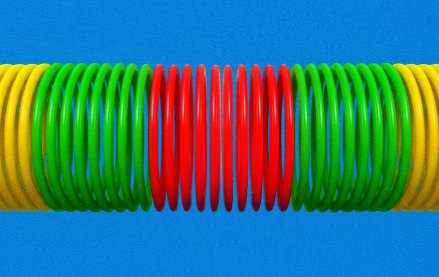Ad Tech Briefing: Google’s Pmax updates suggest it might finally listen

This Ad Tech Briefing covers the latest in ad tech and platforms for Digiday+ members and is distributed over email every Tuesday at 10 a.m. ET. More from the series →
Sometimes it feels Google can’t do right for doing wrong, but let’s not feel overly sad for a company that generates hundreds of millions in daily ad revenue.
As Digiday noted on multiple occasions, April was a tumultuous month for the online advertising giant. Multiple antitrust trials placed its data firehose Chrome at risk of a forced sell-off. Then, there’s the fate of third-party cookies in the market-leading web browser, a saga that has been a central strand in its narrative arc in the 2020s.
A parallel strand to Google’s narrative throughout the 2020s has been the threat AI poses to what many consider Google’s moat: its search advertising business, which generated more than 50% of its ad revenue last year.
Google has been responding to threats posed by ChatGPT and Perplexity et al. with AI offerings of its own — a little too aggressively, according to some. Chief among these has been Performance Max, or Pmax as it is more colloquially known, an offering that has been touted as the key to delivering advertisers’ goals, but without cookies.
However, it hasn’t been without controversy.
In a blog post entitled “Channel performance and more reporting coming to Performance Max,” published earlier this week Tal Akabas, director of product management at Google Ads, noted that the outfit was “introducing new reporting to Performance Max to give you insights into your channel performance, Search terms, and assets.”
This will be a welcome development for the million-plus advertisers who have trialed the technology since its 2021 launch, and grumbled at the opacity of the responses to their questions on how exactly it produces results.
Transparency concerns
Pmax has raised ongoing transparency concerns among advertisers, particularly those in performance-driven sectors. Launched to unify Google’s inventory — from search and YouTube to display and maps — PMax leverages AI to automate placements, creative, and bidding.
However, this opacity is precisely the issue, despite the assurances of Google’s executives.
Advertisers increasingly complain that PMax functions as a “black box.” Unlike traditional campaigns, it offers limited insight into which channels drive conversions, which keywords are triggered, or how budgets are allocated across formats. This makes it challenging to optimize spend or diagnose underperformance. Retailers, for example, struggle to differentiate brand from non-brand traffic, leading to concerns that PMax is capturing branded conversions that would have happened anyway.
Another flashpoint is the cannibalization of existing campaigns. Marketers report that PMax often duplicates efforts already covered by search or shopping campaigns, diminishing control and complicating attribution modeling. This makes campaign performance appear inflated while hiding true marginal gains.
Agencies and DTC brands have also voiced worries that Google’s AI disproportionately favors its platforms and gives minimal actionable feedback, forcing advertisers to rely more on Google’s interpretation of success metrics than their business goals.
Google has acknowledged some of these issues and gradually added reporting tools, such as asset group performance and search term insights. Still, many marketers feel these updates fail to offer true transparency, especially in high-spend, ROI-critical environments where accountability is paramount.
Answering requests
“Today, we’re excited to introduce new channel-level reporting in Performance Max — a top-requested feature,” wrote Akabas in the April 30 blog post. “We’re also adding full search terms reporting and more detailed asset reporting that shows you all the metrics for individual assets.”
The introduction of channel-level reporting is a significant enhancement. Advertisers can now see performance breakdowns across individual Google properties — including YouTube, search, Gmail, display, and on maps — to better understand where conversions occur. A new “Channel performance” page features visual summaries and a detailed channel distribution table with metrics such as clicks, conversions, and cost, which is also downloadable.
Google also expanded asset-level reporting. Advertisers can now view impressions, clicks, and cost per asset, helping them understand which creatives drive performance. This reporting is also being extended to search and display campaigns beyond Performance Max.
In addition, search term reporting is now available, matching the granularity seen in standard search campaigns. This allows advertisers to refine keyword strategies and implement negative keywords or brand exclusions when needed.
Finally, Google introduced channel-specific diagnostics to highlight performance limitations, such as missing store locations or irrelevant landing pages, and recommend fixes, including tools like final URL expansion to improve relevance and reach.
Whether such overtures will ameliorate the hawkish tendencies of the powers that be at regulators, both in Europe and within the Justice Department, remains to be seen.
Of course, Google’s assurances of transparency have given us cause to take them at face value, but with a pinch of salt, although for now, it appears as if Google might finally be listening.
If you feel strongly about any of the issues discussed above, then feel free to get in touch – no PR pitches please.
More in Media Buying

Ad Tech Briefing: Big Tech won 2025 (even when it lost)
How AI, commerce media and scale reshaped ad tech in 2025 to the benefit of Big Tech.

How brands shifted marketing and media strategies through year of tariffs
Marketers share how they navigated the maze of tariffs and regulatory changes this year.

Media Buying Briefing: Omnicom Media execs begin their pitch outreach ahead of an expected new-business glut
Omnicom’s acquisition of IPG is only a few weeks old, but its combined offer to the market will soon be put to the test as it meets with consultants.










